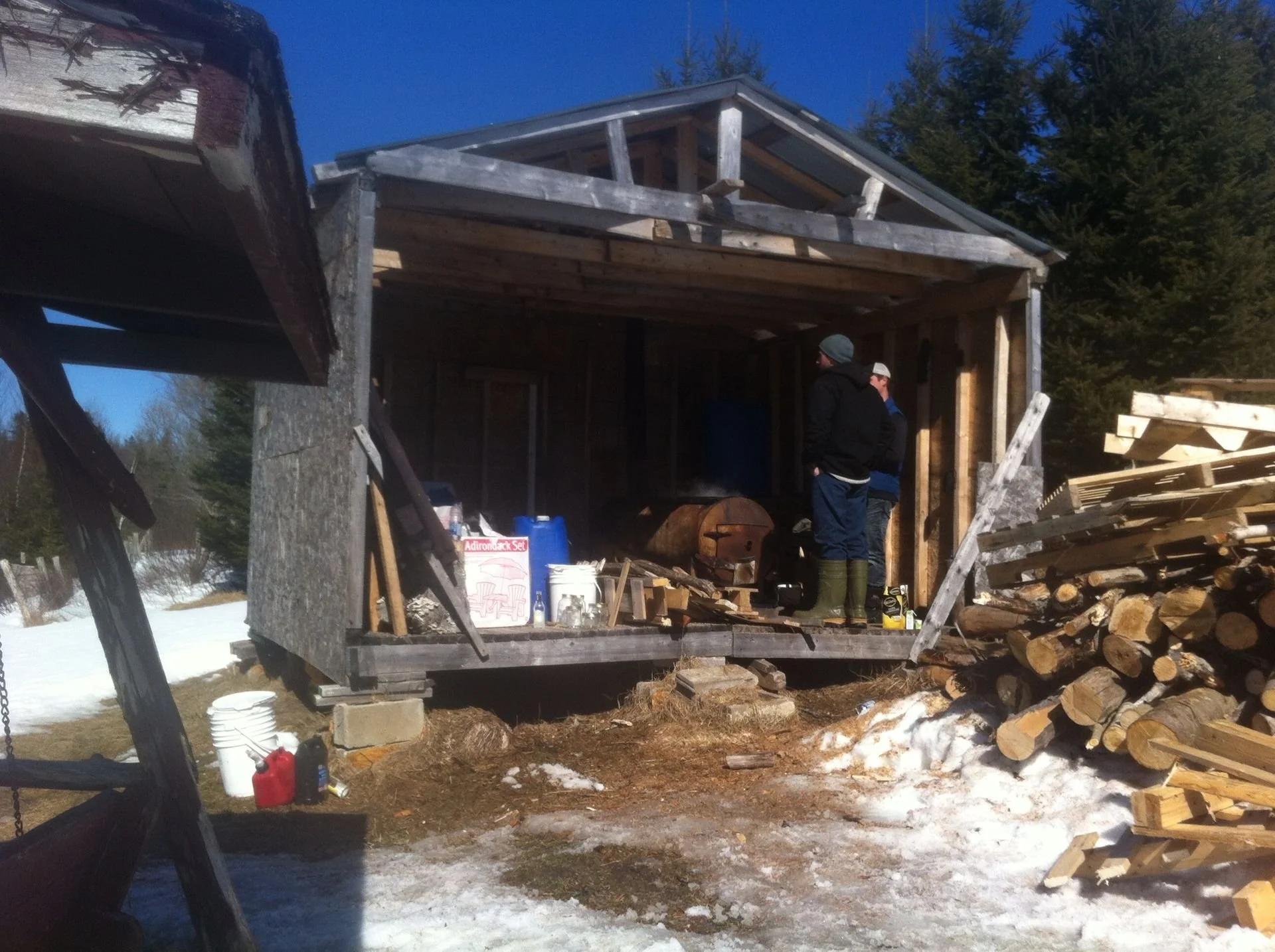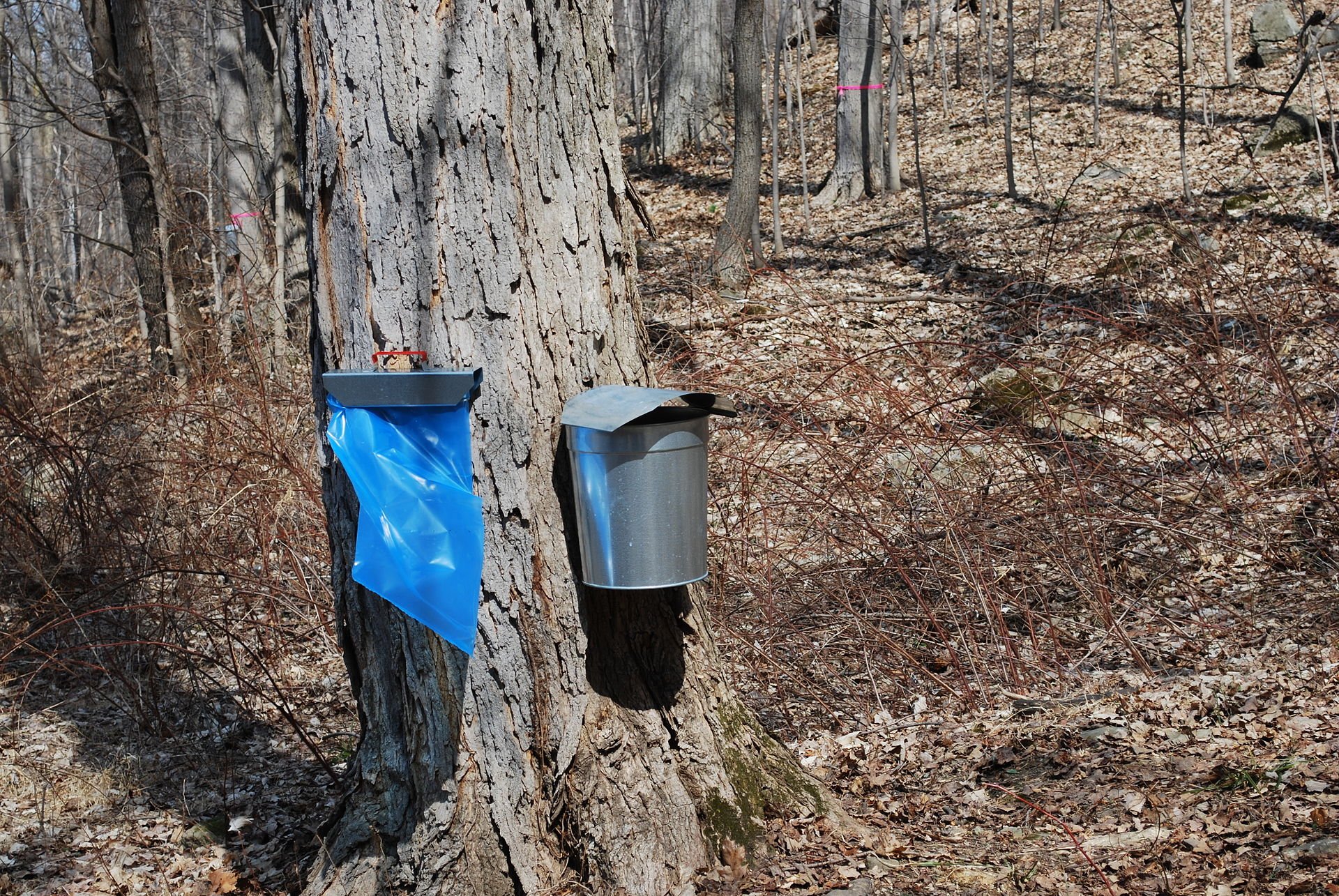
And go away February
In March: A "sugar shack" where maple sap is boiling.
Maple-sap collecting.
Dear March—Come in—
How glad I am—
I hoped for you before—
Put down your Hat—
You must have walked—
How out of Breath you are—
Dear March, how are you, and the Rest—
Did you leave Nature well—
Oh March, Come right upstairs with me—
I have so much to tell—
I got your Letter, and the Birds—
The Maples never knew that you were coming—
I declare - how Red their Faces grew—
But March, forgive me—
And all those Hills you left for me to Hue—
There was no Purple suitable—
You took it all with you—
Who knocks? That April—
Lock the Door—
I will not be pursued—
He stayed away a Year to call
When I am occupied—
But trifles look so trivial
As soon as you have come
That blame is just as dear as Praise
And Praise as mere as Blame—
—Emily Dickinson (1830-1886), a lifelong resident of Amherst, Mass.
Josh Fitzhugh: The big question: When to tap our maples?
A "sugar shack,'' where maple sap is boiled off to make syrup.
Letter from Vermont 1
WEST BERLIN, Vt.
Snow is falling hard here in Central Vermont today, our first major snowfall of the year. Up until now we’ve had mostly freezing rain and slushy snow events and drivers have had to contend with icy rather than snowy roads.
The first couple of months of the year tend to be languid at most Vermont farms that aren’t dairies. The fall harvest is complete as is the Christmas sales season. Equipment has been put away. The days are short and the temperature generally cold. We get a succession of storms. Unless you log (taking down timber trees in anticipation of a log pickup before the roads turn muddy in spring), you spend the time thinking of the coming growing season; repairing structures or equipment; plowing and shoveling roads and roofs; catching up on sleep; and if you can, escaping to warmer climes for a week or two.
In recent years, sugarmakers (i.e., those who make maple syrup) have pondered another question that threatens some of this quietitude. When to tap?
Up until a generation ago, the question was pretty straightforward. You drilled (tapped) your maples just before the days began to climb into the 40’s after cold nights below freezing. That ranged from late February in Southern New England to early March in most of Vermont to late March in Northern New England, including Down East Maine.
The reason for this was that tap holes, once drilled in maple, would tend to dry out over time, and that would reduce the sap flow. In some cases, the dehydration would get so bad that sugarmakers would have to retap their trees, a big undertaking. In addition of course, delaying the tapping would lengthen the inactivity on the farm.
Now, however, the “tapping time” varies tremendously, for a couple of reasons. First, because most sugarmakers now use tubing rather than buckets to collect their sap, tap holes don’t tend to dry out as much as when they were exposed directly to the open air. Secondly, due to the size of some operations, tapping must begin in late November or December just to get all the taps in for the sugar season. (Even with tubing, trees must be retapped every year.)
Climate change also appears to be a factor. Sugarmakers find they can get a “run” of maple sap during the depths of winter when the temperature rises suddenly for a day or two, as it seems to be doing more frequently. If your main cash crop is maple syrup (as it still is for many farmers), you don’t like to miss the opportunity presented for additional production.
At our farm, we are traditionalists. Though we use tubing we don’t tap our trees late February. (Twenty years ago we waited until Town Meeting day, the first Tuesday in March.) It’s annoying when we get a nice spring day in January or February and we hear that some farmers are making syrup (or at least gathering sap) but we just don’t think it’s worth the hassle to gear up for a day here or a day there before the season starts in earnest in early March.
We figure that the trees need their quiet time, as do we.
Josh Fitzhugh, an occasional contributor, is a retired insurance executive, lawyer and journalist. His family operates Tether Loop Farm, in West Berlin. The farm sells maple syrup and hay.



